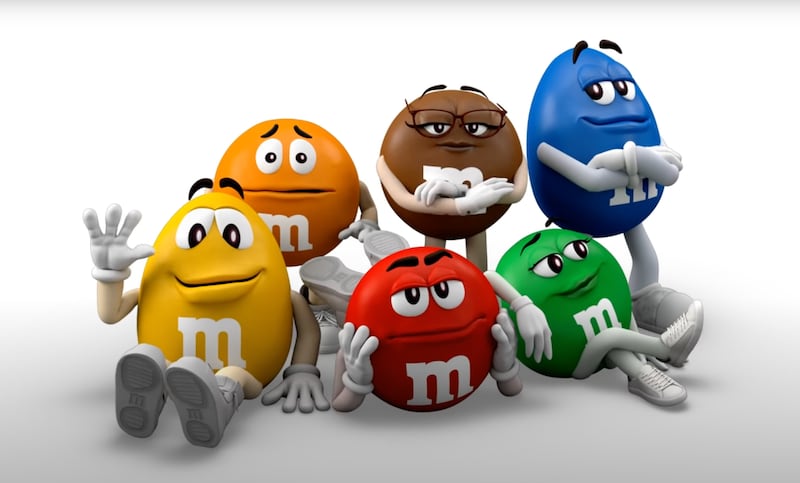Mars, the US manufacturer of confectionery and other food products, said it redesigned the characters from its popular chocolate brand M&M’s for a “more progressive world”, alongside a funding programme that will support the arts and entertainment sector.
The Virginia-based company, which makes confectionery including Mars, Snickers, Twix, Milky Way, Skittles, Galaxy, said the reimagining of M&M’s humanlike characters, is part of its new global commitment to promote inclusion and advance gender equality in its workplaces, the marketplace and in the communities where it sources raw materials.
The M&M’s FUNd – a play on the brand's “fun” nature – will offer resources, mentorship, opportunities and financial support to the arts and entertainment sector to help people gain access to experiences “where everyone feels they belong”, Mars said.
“The refreshed M&M’s brand will include a more modern take on the looks of our beloved characters, as well as more nuanced personalities to underscore the importance of self-expression and power of community through storytelling,” it said.
“Fans will also notice an added emphasis on the ampersand to more prominently demonstrate how the brand aims to bring people together. M&M’s branding will also reflect an updated tone of voice that is more inclusive, welcoming and unifying, while remaining rooted in our signature jester wit and humour.”
The redesigned logo and characters will start appearing online this week and will be added to M&M’s packaging and other promotional materials this year.
The announcement comes as more companies promote inclusion and diversity in the workplace. Forbes ranks the company fourth on both the largest private companies and best employers by state in the US.
It is, however, ranked 65th in the list of best employers for women and 131st in best employers for diversity in 2021.
The M&M’s refresh is focused on women, who are more “current” and “representative of our consumer”, Anton Vincent, president of Mars Wrigley North America, told CNN.
The recipe for M&M’s was invented during the Spanish Civil War, which was fought from 1936 to 1939, by Forrest Mars Sr – who introduced the milkshake-inspired Milky Way bar in 1923 – after he noticed soldiers eating pieces of chocolate covered in a sweets coating, which prevented them from melting in the sun.
M&M’s current character roster comprises four males and two females. M&M’s were first sold in 1941 and the first commercial aired in 1954, starring Red and Yellow, which represented the regular and peanut varieties, respectively – albeit in black and white.
Blue, Orange and Ms Green were added to the mix in the late 1990s, while Ms Brown joined the line-up in 2012.
Mars also tweaked the M&M’s logo as part of its character redesign, making it straighter instead of resting on its side. But the most notable change to the six M&M’s characters is their new shoes: Ms Green now has trainers instead of go-go boots, while Ms Brown now wears lower heels.
The shoes of Red and Yellow now have laces, while Orange's are no longer untied and Blue's resemble “a bad version of Uggs".
There are no plans to add more female characters for now, Mr Vincent said. But to be more inclusive, Ms Green and Ms Brown will be featured more prominently in the company's marketing from now on, he added.
Mars' latest announcement is part of its wider push to become a more socially responsible company. Last November, it said all of its confectionery sold in the UK, Ireland and Canada will be certified carbon-neutral by 2023, the equivalent of more than 220 million chocolate bars a year.
In October, the company’s Royal Canin pet food brand said it had committed to become certified carbon-neutral by 2025, with its first product range under the initiative coming out this year.
Mars, founded in 1911, employs around 130,000 people in more than 80 countries. It posted revenue of $40 billion in 2020, up 8.1 per cent year-on-year, according to Forbes and FactSet.






